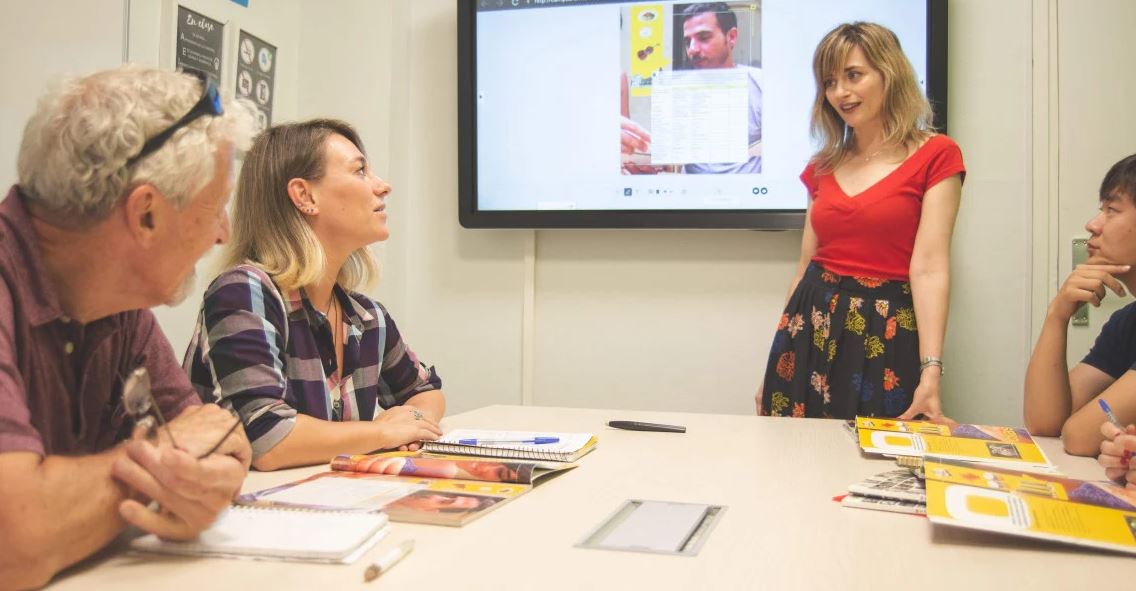Balancing a demanding healthcare career with personal development is no small feat. Between long shifts, patient care, and paperwork, adding Spanish language lessons to your already packed schedule might seem impossible. But the truth is, it’s entirely doable with the right mindset and systems in place.
For healthcare professionals, learning Spanish is valuable in a multicultural workplace. Communicating properly with Spanish-speaking patients and colleagues can improve the quality of care, build trust, and even save lives. If you’re wondering how to make room for Spanish lessons for healthcare professionals, here’s a detailed guide to help you get started without overwhelming your already busy schedule.
Recognize the Benefits and Set Clear Goals
Understanding the benefits of learning Spanish can motivate you to make the time. For example, some benefits may include:
- Improved patient communication: Imagine explaining procedures, medications, or treatment plans directly in Spanish without needing an interpreter.
- Stronger rapport with patients: Patients often feel more comfortable and understood when healthcare providers speak their language.
- Career advancement: Being bilingual is a highly sought-after skill in healthcare.
Once you understand your “why,” set specific targets. Are you aiming to hold basic conversations, understand medical terminology in Spanish, or achieve fluency? Knowing your goals will help you choose the right lessons and motivate you.
Choose Flexible Learning Options
One of the best ways to fit Spanish lessons for healthcare professionals into your hectic schedule is to find flexible learning formats. Look for programs or tutors that understand the demands of healthcare jobs.
- Online classes: Platforms offering virtual lessons let you learn from anywhere—during a lunch break, between shifts, or at home.
- Short, focused lessons: Choose programs with bite-sized lessons that fit into 15 to 30-minute windows.
Many online courses also cater specifically to healthcare professionals, teaching practical phrases and medical vocabulary that can be applied directly to one’s work.
Schedule Your Lessons Strategically
Time management is key. Even the busiest schedule has pockets of time that can be used well. Here’s how to fit in your lessons:
- Block out time: Treat your lessons like a necessary appointment. Choose a consistent time, early mornings, evenings, or on your day off, and stick to it.
- Use your commute: Listen to Spanish audio lessons or podcasts if you drive. If you take public transport, you can use apps or flashcards.
- Practice during downtime: Use brief breaks at work to review vocabulary or practice phrases. A five-minute refresher here and there adds up over time.
Remember, consistency matters more than long study sessions. Even 15-20 minutes a day can help you progress a lot.
Focus on Healthcare-Specific Spanish
As a healthcare professional, you must also master medical terminology and phrases used in clinical settings. This focused approach saves time and ensures you learn language skills that directly benefit your work.
Make It Interactive and Fun
Learning doesn’t have to feel like another item on your to-do list. Make it enjoyable:
- Practice with colleagues: If you work with Spanish-speaking staff, ask them to help you practice. Many will be happy to assist and share tips.
- Use role-playing: Practice patient interactions with a tutor or friend. Acting out scenarios makes the lessons more practical and engaging.
- Incorporate culture: Watch Spanish-language shows, listen to music, or explore Spanish recipes. These activities make learning more immersive and less stressful.
Use Technology and Learning Resources
In addition to formal Spanish lessons, use tools that integrate language learning into your routine. Here are some of the tools that can help you:
- Flashcard apps to review key terms during breaks.
- Voice recognition software to practice pronunciation.
- Medical Spanish resources: Books or apps specifically designed for healthcare settings.
These tools help reinforce what you’ve learned and make studying more convenient.
Conclusion
Fitting Spanish language lessons into a busy healthcare schedule can be challenging but rewarding. Communicating with Spanish-speaking patients enhances your skills, improves outcomes, and builds meaningful connections. By choosing flexible options and focusing on relevant vocabulary, you’ll make steady progress, and a heartfelt “Gracias” will make it all worthwhile.
